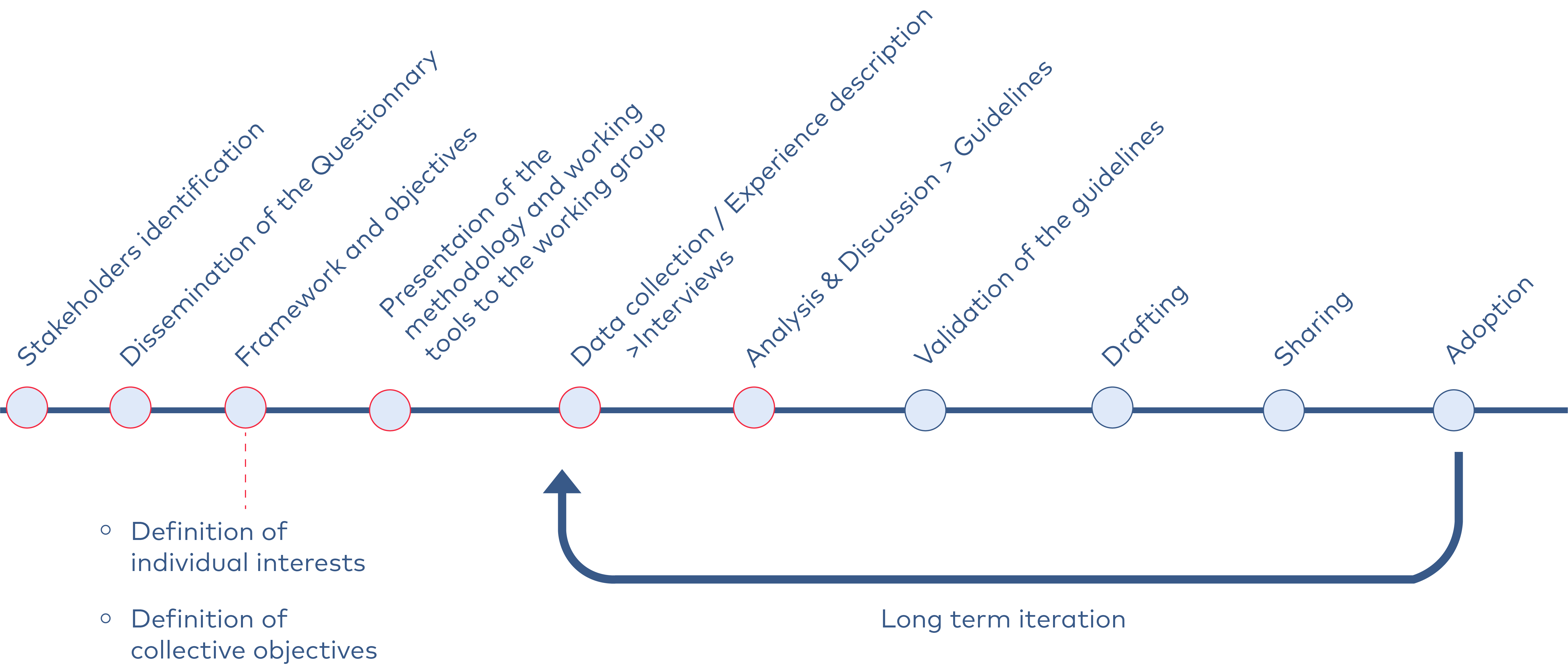3. METHODOLOGY
All the proposals mentioned in this document are the result of expertise acquired over 12 years of studying the processes involved, analysis of the pollution cases referred to, and of interviews conducted with a representative panel of stakeholders involved in WWTP operation (Annex 2).
The primary objective was to determine the measures/actions to implement to secure the use of biocarriers throughout their life cycle.
The definition of the different stages of the life cycle of the biocarriers that has been chosen considers all stages of their use, from production sites to their end of life, either accidental or controlled.
Agence de la Santé et des Services Sociaux de la Montérégie (Québec), 2015, Manuel d'élaboration d'un guide de bonnes pratiques
EUNOMIA, 2019, Preventing plastic pellet loss in supply chains. Design of a supply chain approach to prevent pollution from plastic pellets. A report for Zero Waste Scotland.

Figure 3 Stages of the biocarrier life cycle
The recommendations are the result of an iterative process in which each stakeholder was consulted several times.
The various stages to establish the guidelines were as follows:
- Synthesis of available information, previous studies, and reports.
- Collection of additional unpublished data and information from environmental authorities and expert NGOs :
- Specific questions at meetings and in emails
- OSPAR shared documents (Summary of information shared by the OSPAR contracting parties in response to the request for information of 22nd of June 2022).
- Identification of stakeholders involved in the biocarrier life cycle (Annex 2)
- Interviews and questionnaires on stakeholders' experiences regarding the use of biocarriers (Annex 4)
- Analysis of experiences and Best Available Techniques (BATs) and determination of appropriate measures to be implemented.
- Discussions on recommendations (iterative approach, including new recommendations with each new discussion or interview)
More details on this method are provided in A. Tunstad 2021, The biocarrier escape routes, which describes the socio-material approach as a means of data collection and analysis, the development of new questions, and the elaboration of recommendations as a simultaneous procedure where the different steps influence each other.

Figure 4 Long-term iterative process for the implementation of good practices